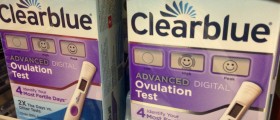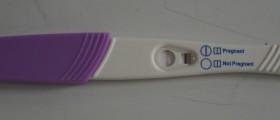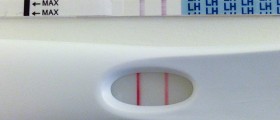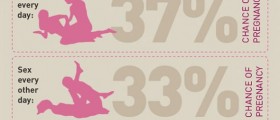
Ovulation is a phase in a woman’s menstrual cycle in which a mature egg, ovarian follicle, is released from the ovary, pushed down the fallopian tube, and is available to be fertilized. The inside layer of the uterus thickens to get ready for a fertilized egg. If no conception occurs, the uterine inside layer as well as blood will be shed in the process of menstruation.
When does ovulation happen?
Ovulation usually occurs somewhere around 14 days before the next menstrual period. It would be relatively easy to calculate the ovulation period if woman’s menstrual cycle was steady and predictable. However, the length of the menstrual cycle depends on the various factors such as hormonal levels, stress, environmental influences etc. Women’s menstrual cycle may vary from 15 to 50 days. Only a small percentage of all women, approximately 12% of all menstruating women, has a 28-day menstrual cycle and their ovulation happens in the middle of a period or on the 14th day. On average, ovulation happens anywhere between 11-21 days since the last menstrual period, or 12-16 days from when woman expects the next menstrual period to start.
During the time of ovulation, an egg can be fertilized for only about 12 - 24 hours. However, sperm can survive in the body for 3 to 5 days so that the fertile time is considered to be about 5-7 days.
Prediction methods
Ovulation kits available on the market may help to track the ovulation. These work by measuring the levels of Luteinizing hormone, present in the women’s urine. Levels of this hormone are increasing as the fertility rises because their main purpose is to trigger ovulation and release the egg from an ovary. These tests are able to detect the presence of the hormone 24-36 hours before the ovulation. Ovulation kits are safe means of family planning. The only bad point about the ovulation kits is that they are pretty much expensive and women need to buy a new one each month.
Electronic predictors detect not only Luteinizing hormones but also the estrogen. These predictors may indicate up to six fertile days, which is an extended period in comparison to standard ovulation kits.
Basal body temperature charting is another method that helps in predicting the ovulation. Among many other changes that take place in the women’s body during the menstrual cycle is the rise in the body temperature. Temperatures of 96 to 98 degrees are considered normal. However, in the period of ovulation temperature may rise to 97-99 degrees. A special basal body temperature thermometer is used to measure a basal temperature orally, each morning, as soon as the woman wakes. Accurate and regular charting will help to predict the exact period of ovulation.















Your thoughts on this
Loading...